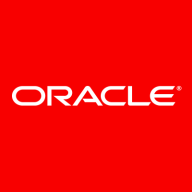

Oracle Java Cloud Service and Red Hat OpenShift are both strong contenders in cloud application deployment. Red Hat OpenShift has the upper hand due to its Kubernetes-based flexible container orchestration capabilities, making it ideal for scalability and microservices.
Features: Oracle Java Cloud Service seamlessly integrates with Oracle's databases and enterprise applications, creating a unified environment for Java solutions. It notably supports on-premise application development using popular IDEs and boasts easy middleware platform deployment. Red Hat OpenShift is valued for its automation and containerization features, customization with Kubernetes, and fast application deployment using source-to-image conversion.
Room for Improvement: Oracle Java Cloud Service could improve scalability and flexibility outside Oracle's ecosystem, ease integration with non-Oracle tools, and enhance native support for containers. Red Hat OpenShift might benefit from more straightforward deployment processes, less complexity in managing Kubernetes, and improved out-of-the-box performance monitoring tools.
Ease of Deployment and Customer Service: Oracle Java Cloud Service offers straightforward setup, tapping into Oracle's extensive support channels, favorably fitting existing Oracle users. Red Hat OpenShift, while more complex to deploy because of Kubernetes architecture, provides robust support for containerized applications helping organizations committed to DevOps and microservices architectures.
Pricing and ROI: Oracle Java Cloud Service generally involves a higher setup cost aligned with its premium enterprise focus, yet it offers good ROI for Oracle users through optimized enterprise integrations. Red Hat OpenShift offers a flexible pricing model potentially leading to lower upfront costs, with long-term savings from operational efficiency gains in container-driven strategies.
| Product | Market Share (%) |
|---|---|
| Red Hat OpenShift | 11.6% |
| Oracle Java Cloud Service | 0.4% |
| Other | 88.0% |


| Company Size | Count |
|---|---|
| Small Business | 6 |
| Midsize Enterprise | 3 |
| Large Enterprise | 10 |
| Company Size | Count |
|---|---|
| Small Business | 17 |
| Midsize Enterprise | 4 |
| Large Enterprise | 40 |
Oracle Java Cloud Service is a complete platform and infrastructure cloud solution for building, deploying, and managing Java EE applications. Use Oracle Java Cloud Service to rapidly provision an application environment with Oracle WebLogic Server as the application container, Oracle Coherence as a caching and data grid tier, and Oracle Traffic Director as the software load balancer—all on top of infrastructure provided by Oracle Compute Cloud Service.
For more information on Oracle Java Cloud Service, visit Oracle.com
Red Hat OpenShift offers a robust, scalable platform with strong security and automation, suitable for container orchestration, application deployment, and microservices architecture.
Designed to modernize applications by transitioning from legacy systems to cloud-native environments, Red Hat OpenShift provides powerful CI/CD integration and Kubernetes compatibility. Its security features, multi-cloud support, and source-to-image functionality enhance deployment flexibility. While the GUI offers user-friendly navigation, users benefit from its cloud-agnostic nature and efficient lifecycle management. However, improvements are needed in documentation, configuration complexity, and integration with third-party platforms. Pricing and high resource demands can also be challenging for wider adoption.
What are the key features of Red Hat OpenShift?Red Hat OpenShift is strategically implemented for diverse industries focusing on container orchestration and application modernization. Organizations leverage it for migrating applications to cloud-native environments and managing CI/CD pipelines. Its functionality facilitates efficient resource management and microservices architecture adoption, supporting enterprise-level DevOps practices. Users employ it across cloud and on-premises platforms to drive performance improvements.
We monitor all PaaS Clouds reviews to prevent fraudulent reviews and keep review quality high. We do not post reviews by company employees or direct competitors. We validate each review for authenticity via cross-reference with LinkedIn, and personal follow-up with the reviewer when necessary.